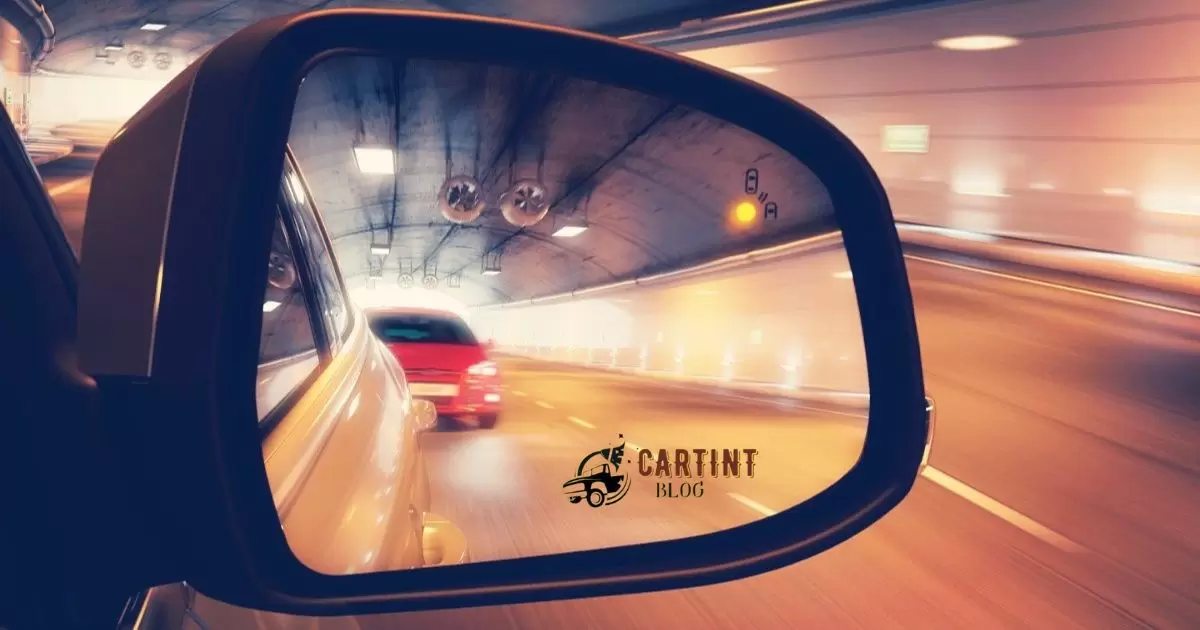Tinting car windows means applying a thin, coloured film to the glass. It’s done to reduce sunlight, heat, and glare inside the vehicle. Whether inside or outside, the tint film is placed on the interior surface of the windows. Both options offer benefits but may vary in appearance and durability.
Ever wondered, Do you tint the inside or outside of car windows? The answer lies within the unseen expertise behind window tinting. Whether it’s the inside or outside, the process involves meticulous application to transform your driving experience. Let’s unravel the mystery behind this vehicular enhancement.
When it comes to tinting car windows, the magic happens on the inside! By applying tint film to the interior side of your car windows, you’ll enjoy enhanced privacy, reduced glare, and better UV protection all while maintaining a sleek exterior appearance. Stay with us to uncover more about this window tinting process.
Does Ceramic Tint Go Inside Or Outside Window
Ceramic tint goes on the inside of your car windows. It’s a high-performance film that gets carefully applied to the interior surface. This process blocks UV rays, reduces heat, and enhances privacy while keeping your car looking sharp.
The ceramic tint’s placement on the inside ensures maximum effectiveness in protecting you from the sun’s glare and harmful rays.Unlike other tints, ceramic tint specifically adheres to the interior side of the window.
This method ensures better durability and longevity, maintaining its effectiveness over time. By staying on the inside, ceramic tint shields you from the sun’s impact while preserving the sleek look of your vehicle’s exterior.
Can You Put Tint On The Outside Of A Car Window
Tinting car windows on the outside isn’t a standard practice. It’s challenging to apply and prone to damage from elements and wear. Most professionals apply window tint films on the inside for better durability and protection against weathering.
While some might consider external tinting, it’s less common due to its susceptibility to peeling and scratching from everyday use.
Putting tint on the outside might seem like a quick fix, but it’s not the go-to method. Exterior tinting tends to deteriorate faster, facing constant exposure to the elements. Opting for interior application ensures longer-lasting and better-maintained window tinting for your car.
Does Rear Window Tint Go On The Inside Or Outside
Rear window tint goes on the inside of your car. When applying tint, it’s crucial to place it on the interior surface for optimal results. This process ensures better adherence, longevity, and effectiveness in reducing glare and UV rays. For that sleek, shaded look, the inside of your rear window is where the tinting magic happens!
Applying rear window tint happens on the inside of your vehicle. Placing the tint film on the interior ensures it adheres properly and functions effectively. This method not only reduces glare but also adds a layer of protection against harmful UV rays. Keep in mind, the inside placement of tint gives your car that stylish, shaded appearance.
Tint On Outside Of Car Window
When it comes to tinting car windows, applying tint film on the outside might seem plausible, but it’s not the standard practice. Tinting is typically done on the inside of the car windows. This is because the interior side allows for better protection of the tint film from wear and tear caused by external elements like weather and debris, ensuring a longer-lasting tint job.
Tinting the outside of car windows isn’t recommended due to several factors. It’s more prone to damage from road debris, weather conditions, and regular wear and tear. Tinting from the inside provides better adhesion, ensuring the film stays intact and functional for an extended period.
Is Factory Tint On The Inside Or Outside

Factory tint on car windows is applied during manufacturing, typically on the inside. Manufacturers use a dye within the glass layers to achieve this tint, offering some UV protection and a level of privacy. It’s a permanent part of the glass, distinguishing it from aftermarket tints that are applied to the interior surface of windows for customization.
Understanding this factory tint distinction can help in deciding whether additional tinting is necessary for your preferences or needs.The inside application of factory tint ensures durability and longevity, as it’s protected from external elements and wear.
While this tint provides some benefits, it might not offer the customization or varying levels of darkness that aftermarket tints applied on the inside surface can provide. Knowing the difference between factory and aftermarket tint helps in making informed choices for achieving desired results with window tinting.
What Happens If You Put Window Tint On The Outside
If you apply window tint on the outside, it won’t stick properly or last long. The exterior surface of the window isn’t designed for adhesive, causing the tint to peel off easily, especially in harsh weather conditions or during car washes.
Ensuring the durability and effectiveness of your window tint is crucial, and that includes maintaining it properly. You wash your car after window tint installation. Neglecting this step could compromise the tint’s quality, leading to a messy and ineffective job.
Law enforcement often requires tints to be applied on the inside for safety reasons, ensuring a clear view for drivers. Putting window tint on the outside doesn’t just compromise its effectiveness but also raises potential legal concerns, making it crucial to follow proper tinting procedures for optimal results.
Exterior Window Tint
Exterior window tinting upgrades your car’s style and performance. It’s a process where a durable film is skillfully applied to the outside of your car’s windows. This film shields against UV rays and heat while adding a touch of sleekness to your vehicle’s appearance.
By opting for exterior window tinting, you achieve a cool, polished look while safeguarding your car’s interior from sun damage. The application of this specialized film on the outer side of the windows acts as a shield against harsh elements, contributing to a more comfortable and protected driving experience.
Understanding Car Window Tinting Basics
Car window tinting enhances privacy, reduces glare, and blocks harmful UV rays. It involves applying a tinted film to the inside of the car windows. This process provides numerous benefits while maintaining a sleek look for your vehicle.
Different tint levels offer varying degrees of visibility and heat reduction. The tinting process requires precision and expertise, ensuring a seamless application for optimal results. Understanding these basics empowers you to make informed decisions about tinting your car windows.
Advantages Of Exterior Window Tinting
- Enhanced Heat Rejection: Exterior window tinting reflects sunlight before it enters the vehicle, reducing heat buildup inside.
- Protection from UV Rays: Blocks harmful UV rays, safeguarding both the car’s interior and occupants from sun damage.
- Improved Aesthetics: Provides a sleek and uniform appearance to the vehicle’s exterior while offering functional benefits.
- Increased Privacy: Adds an additional layer of privacy by obscuring the interior from prying eyes.
- Durability: Exterior tinting films are designed to withstand weather elements, ensuring longer-lasting performance.
Interior Tinting: Pros And Cons
When it comes to interior tinting for cars, it offers enhanced privacy and protection from harmful UV rays. The tint film applied inside the windows also helps in reducing glare, making for a more comfortable driving experience.
Interior tinting might require professional installation, and improper application could lead to air bubbles or peeling over time.On the downside, interior tinting may impact visibility, especially during nighttime or in low-light conditions.
If not installed correctly, it might interfere with electronic signals, like GPS or cell reception, posing a potential inconvenience. Yet, with proper installation and care, interior tinting can provide numerous benefits for car owners seeking added comfort and protection on the road.
Exterior Tinting: Worth Exploring Options?

Considering exterior tinting for your car? It’s a choice that demands exploration. This method involves applying tint film directly onto the outer surface of your car’s windows, offering protection against harsh elements and adding a touch of style.
Exploring the different options available can help you find the perfect balance between aesthetics and functionality for your vehicle.With exterior tinting, your car gains a layer of defence against sun damage and scratches.
This method allows for easy maintenance and customization, giving you the flexibility to choose the level of tint and style that suits your preferences. Exploring these options ensures you make an informed decision, unlocking the benefits of exterior tinting for your vehicle.
Factors Impacting Tinting Decision Making
When deciding on tinting, consider your local regulations they determine the darkness level allowed on car windows. Your personal preferences play a crucial role too; whether it’s for privacy, UV protection, or reducing glare, your needs shape your tint choice.
Ponder the type of tint dyed, metallic, or ceramic as each offers distinct benefits impacting both appearance and functionality.The climate where you reside affects your tinting decision greatly. In hotter regions, you might prioritize heat reduction, leaning towards ceramic tints.
Meanwhile, in areas with less sunlight, you may focus more on UV protection. Your lifestyle and driving habits also factor in frequent long drives that might necessitate stronger glare reduction. Considering these elements guides you towards the optimal tint choice for your car windows.
Cost Analysis: Interior Vs. Exterior Tint
| Factors | Interior Tint | Exterior Tint |
| Materials Cost | $$ – $$$ | $$ – $$$ |
| Labor Cost | $$ – $$$ | $$ – $$$ |
| Installation Time | Shorter | Longer |
| Durability | Generally High | Generally High |
| Protection Level | Good UV, | Good UV, |
| Heat, Glare | Heat, Glare | |
| Warranty | Typically | Typically |
| Longer | Shorter | |
| Aesthetics | Inside View | Outside View |
Longevity: Which Tint Lasts Longer?
When considering tint longevity, various factors affect durability. High-quality tint films typically last longer, especially those with UV-resistant coatings. Maintenance matters too—regular cleaning and avoiding abrasive materials can extend tint life. Comparing different tint options directly informs about their durability and lifespan.
Factors like the quality of the tint film and its installation significantly impact how long a tint lasts. Opting for reputable brands and professional installation often results in a longer-lasting tint.
Regular upkeep and avoiding harsh cleaners play a crucial role in maintaining the tint’s longevity. Understanding these aspects helps determine which tint option offers the best durability for your needs.
Benefits Of Tinting Inside Windows
- Enhanced Privacy: Tinting the inside windows offers increased privacy by limiting visibility into the car, providing a sense of security and confidentiality.
- UV Protection: Tinted windows block harmful UV rays, reducing the risk of skin damage and interior fading caused by prolonged sun exposure.
- Heat Reduction: Tinted windows help regulate interior temperatures by blocking heat, keeping the car cooler during hot weather and reducing the need for excessive air conditioning.
- Glare Reduction: Tinted windows minimize glare from sunlight and headlights, enhancing visibility and reducing eye strain while driving.
Heat Reduction: Inside Or Outside Tint?
When considering heat reduction through window tinting, it’s crucial to apply the tint film on the inside of the car windows. This placement ensures maximum effectiveness in blocking out heat, minimizing the interior temperature, and providing a more comfortable driving experience.
Inside tinting acts as a barrier, reflecting and absorbing the sun’s rays, effectively reducing heat transfer into the vehicle cabin.On the contrary, applying tint film on the outside of car windows isn’t a common practice for heat reduction.
The exterior application doesn’t offer the same level of heat insulation as interior tinting does. To optimize heat reduction and maintain a cooler interior, choosing inside tinting remains the preferred method for most car owners.
Legalities: Inside And Outside Tint Laws

Car window tint laws vary by state, governing both inside and outside tinting. Regulations typically specify maximum tint darkness levels for side, rear, and front windows. Inside tinting must comply with these standards to ensure visibility and safety while driving.
Outside tint laws aim to maintain a uniform appearance while safeguarding against excessive darkness that could impede visibility for law enforcement. Understanding these legalities is crucial when considering window tinting for your vehicle. Inside and outside tint laws exist to uphold safety and visibility standards.
States set specific regulations to control the darkness of window tints, emphasizing the importance of clear visibility for drivers. Compliance with these laws ensures that vehicles maintain transparency and safety on the road while allowing drivers to enjoy the benefits of window tinting within the legal limits.
Maintenance: Inside Vs. Outside Challenges
| Maintenance: Inside Vs. Outside Challenges |
| Aspect | Inside Tint | Outside Tint |
| Exposure | Protected from external elements | Direct exposure to weather and debris |
| Cleaning Difficulty | Relatively easier | More prone to dirt and scratches |
| Durability | Typically longer-lasting | Susceptible to weathering over time |
| Maintenance Needs | Minimal upkeep required | Regular cleaning and care necessary |
Cost Analysis: Interior Vs. Exterior Tint
Interior Tint
- Generally more affordable due to easier application processes.
- Requires fewer materials, reducing overall costs.
- Labour costs might vary but tend to be lower compared to exterior tinting.
Exterior Tint
- Often more expensive due to the complexity of the process.
- Requires specialized materials designed for external conditions.
- Labour costs can be higher due to the intricacies of exterior application.
Aesthetics: Inside Vs. Outside Appeal
When it comes to the aesthetics of window tinting, the inside holds the key. Tinting the inside of car windows maintains a seamless, sleek look from the outside. This approach ensures a clean and polished appearance while delivering privacy and protection on the inside.
Considering the outside appeal is crucial too. A well-applied tint on the inside complements the overall look of the vehicle, adding a touch of sophistication and style. Balancing the inside benefits with the exterior’s visual appeal creates the perfect harmony for an enhanced driving experience.
FAQ’s
Does window tint go on the inside or outside?
Window tint is applied on the inside of car windows. This placement ensures proper adhesion and protection from external elements.
Should window film be on the inside or outside?
Window film is best applied on the inside of windows for optimal performance, longevity, and protection.
Is it OK to put a tint on an outside window?
Applying tint on the outside won’t last or perform well. Inside the application ensures durability and effectiveness.
Is rear window tint on the inside or outside of the car?
Rear window tint, like other windows, is applied on the inside to ensure durability and functionality.
Conclusion
In the world of car window tinting, the choice between inside or outside application holds significance. Opting to tint the inside of car windows ensures longevity, protection, and a seamless, polished exterior appearance. This approach guards the tint film against wear and tear from external elements, preserving its effectiveness over time.
Conversely, placing tint on the outside might seem tempting, but it risks premature damage and reduced efficiency. Ultimately, the inside application not only maintains a sleek exterior but also guarantees durability and functionality, answering the crucial question, Do you tint the inside or outside of car windows?



